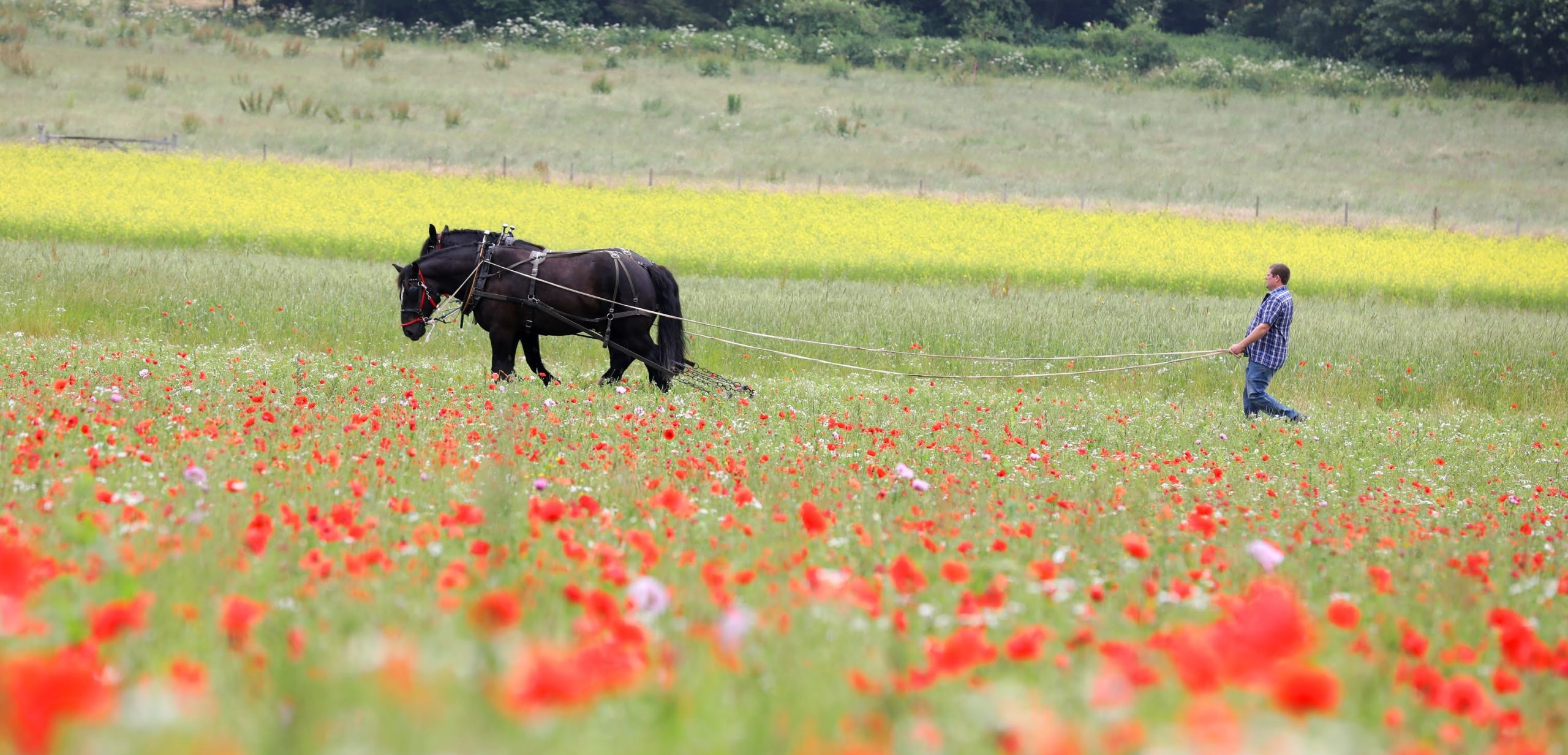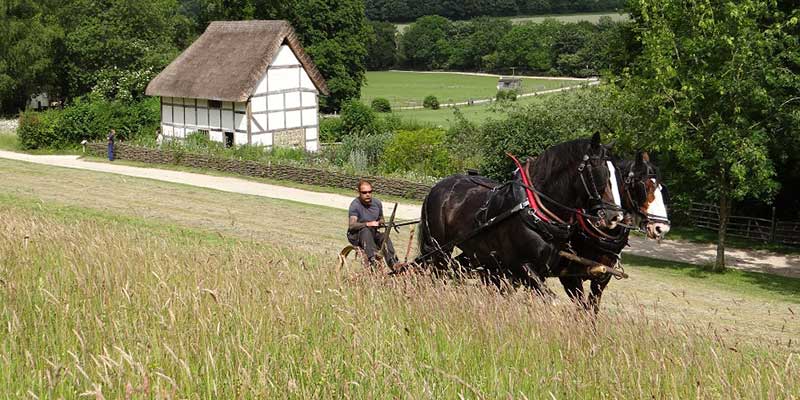
The Weald and Downland museum is set in 40 acres of glorious Downland countryside in the Lavant Valley at the centre of the South Downs National Park. Strolling around you will be close to the rhythm of the countryside and a quieter simpler age.
Heavy horses work in the fields using 19th century implements or haul carts as they pass by. In the valley traditional crops are grown. Sheep will graze the lower slopes and higher up you can explore the traditionally managed woodlands that provide timber and fuel for the Museum.
Stop at the historic houses with their traditional period gardens and, when you are weary, picnic by the millpond or simply sit and absorb the sights, smells and sounds of this unique place.
Share
Environmental Heritage
Wildflower Meadows
Here at the Museum we are committed to caring for our site in an environmentally friendly way as far as we possibly can. Our six historic gardens are managed in a traditional way and fertilised using dung and compost produced on site. Our meadows are managed for bio-diversity and the habitat supports bees, birds, mammals, butterflies and other invertebrate species.
We can play a vital role in protecting the ecosystem that the wildflower meadows support and this also gives us an opportunity to demonstrate to our visitors a very important part of our environmental heritage.
The wildflower meadow next to Poplar Cottage (map ref 7) was created at the end of 2012, using the some of the wildflower turf, which had been specially grown for the opening ceremony of the Olympic Games 2012.
The 200 square meters of turf, a unique Olympic legacy, was donated thanks to a joint initiative between Hampshire-based Wildflower Turf Ltd and the Sussex-based Meadows Nectar Networks Initiative. The flowers and grasses used in the turf include yellow rattle, self-heal, bird’s-foot trefoil and crested dogs-tail, all of which are native to Sussex.

Wildflowers in the Poplar Cottage garden.
Once they were common in the region but are now in significant decline due to intensive farming methods. During the first summer of growth the area was dominated by crested dog’s-tail grass, which does not in fact make good hay as it is very rough.
However this grass is likely to be less dominant next year as the wildflower species become more firmly established. The meadow was scythed by hand during August, after the seed had set and scattered.
Poplar Cottage was originally built on the edge of wasteland, and so this 200 square metres of wildflower meadow may replicate the area of common land which lay alongside the cottage.
We are also working with the South Downs National Park Authority and the Royal Botanic Gardens Kew on a downland restoration project on the north-facing bank which lies between Hambrook Barn and Tindalls Cottage. “Downland” can be defined as thin soil over chalk, characterised by grassland with a high diversity of species. It is an ancient landscape which has been created over generations through grazing and mowing.

This land is used for producing a crop of hay for our animal feed, and for grazing sheep. It currently supports about six fine grasses and wild flower species, but with a sustainable grassland management programme this will be enhanced. The land was seeded and planted with plant plugs during the autumn and winter.
Where possible we scythe our meadows and historic gardens by hand, and the hay on the larger bank is cut using our heavy horses whenever we can. We normally use Austrian scythes, which are lighter and easier to handle, but occasionally also demonstrate the use of the English scythe. We also run scything courses as part of our adult education programme.







